10 Best Tips And Tactics For Plugging for Steelhead
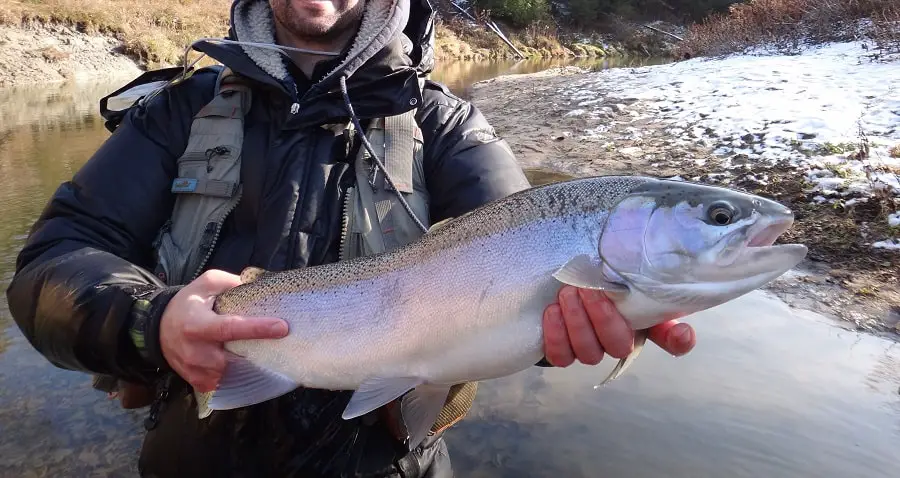
Plugging for steelhead in rivers is a method that’s been popular among seasoned fishermen and guides for as long as I can remember. My knowledge of plug fishing for steelhead comes from years of guiding and learning various techniques and tips from fellow guides and plug fishermen.
This article uncovers the secrets to hooking more steelhead with plugs and includes the five most effective plugs used by guides.
How to Effectively Fish Plugs for Steelhead: 4 Methods
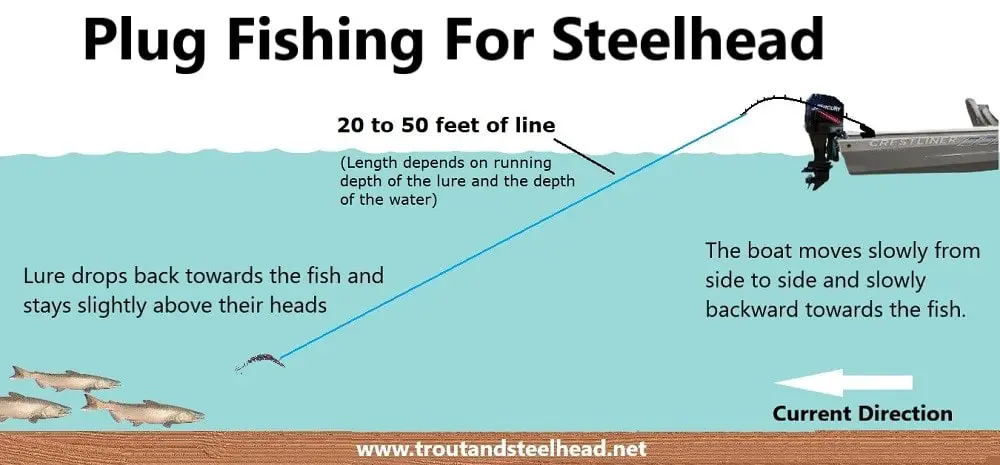
Plugs are wobbling lures, but some anglers also consider crankbaits to be plugs, and most anglers consider plugging a method done from the boat. Plugging for steelhead consists of presenting a plug behind a boat, or from the bank, or when wading to steelhead holding or moving throughout the river.
Let’s explore the four primary methods to fish with plugs:
- Back Trolling Plugs: In most rivers, back trolling is the go-to method for plug fishing. It involves running your plugs from the back of the boat while slowly drifting downstream towards the steelhead hangouts. This article focuses primarily on this style of plug fishing. Backtrolling plugs is the best method to slowly slip downstream and present plugs to steelhead in deep holes.
- Casting Plugs or Plugging For Steelhead From The Bank: If you don’t have a boat or you prefer fishing from the bank or wading, casting plugs is a great option. Plugs work best in waters ranging from 5 to 15 feet deep. Casting plugs and other lures involves throwing them across the river and then either swinging the plug across the current in front of the steelhead or reeling the plugin very slowly.
- Trolling Plugs: Trolling plugs means moving the boat forward while pulling your plugs behind the boat, and this is sometimes done in the lower river where it is wide and slow like a lake with very slow current speed.Most trolling with plugs is done in the big open water. When trolling, you can flatline plugs for shallow spots or use downrigger balls for deeper waters. For extra depth, consider Dipsy Divers or Jet Divers. Surface side planers can also help cover more water.
- Back Bouncing Plugs: Back bouncing for steelhead can be done with plugs. Back bouncing plugs involve anchoring your boat above target areas and using a heavy weight to anchor or drag the plug downriver toward the steelhead’s hideout. It is not really plug pulling, but more like bait fishing with plugs.
The Setup For Plugging Steelhead
Before you hit the water, it’s crucial to have the right gear for the job. Here’s what you need:
The Boat:
Any small to midsize fishing boat will work for pulling plugs. In smaller rivers, guides and anglers will fish from a drift boat, pontoon boat, or inflatable raft. These are the boats I use the most for shallow, remote rivers.
Larger motor boats with trolling motors and a kicker motor are the norm in the larger rivers out west or large Great Lakes Rivers. Some anglers even opt for fishing kayaks and canoes.
Trolling motors help the boat run straight and slip downstream when back trolling in the bigger boats.
Plug Rods:
When pulling plugs, go for a medium soft action rod with a sturdy backbone to handle larger fish. A sensitive rod tip is also essential. Some anglers will even choose glass rods due to the soft even bend of the rod.
Although I have read seven feet long rods are preferred by some anglers, in my opinion, the best steelhead plug rods are 8′ to 9’6″ moderate action rods in an 8-16 pound line rating.
Regardless of your rod, if you are running multiple rods, it is recommended to keep all your rods and reels identical to maintain consistency when running multiple lines.
For pulling plugs from a drift boat or motor boat, the ideal steelhead plug rod is the Lamiglas Battle Glass Salmon & Steelhead Rod or the very popular glass tip rod with its sensitive tip is the Lamiglas XCC Bait & Trolling Casting Rod, or the Lamiglas XCC Kwik Series Salmon & Steelhead Rod.
Reels:
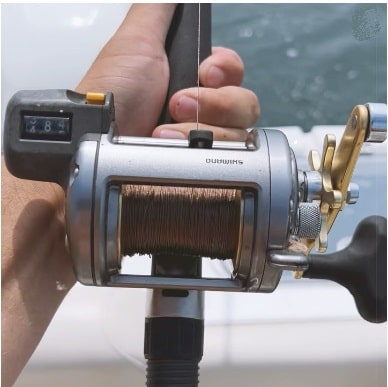
You can use various types of reels, including spinning reels, low-profile baitcasting reels, round baitcasting reels, or line counter reels.
For a precise presentation with plug fishing, a line counter baitcasting reel is your best bet.
Main Line:
Main line preferences vary, and many anglers and guides will have different opinions on the best line and line size, but many anglers opt for 40 to 65-pound braided main line for many reasons. Mono is more forgiving with extra stretch, but it is thicker.
High-quality braided lines in the 50 to 65-pound range, such as Sufix 832 Advanced Supreme Braid or P-Line’s Spectrex, are worth considering.
Leaders:
A fluorocarbon leader of 12 to 20 pounds is a must for plug fishing especially if you are using a braided line, but the leader size depends on the conditions.
In faster currents or off-colored water, go with a heavier leader. In low, clear water, when steelhead are pressured, or when bank fishing smaller rivers, go with a lighter leader.
Some guides prefer 40-pound leaders, ensuring that if they get snagged and pull hard enough, the hooks on the lures will bend, making retrieval easier.
Leader length often depends on water clarity but leaders ranging from 3 to 6 feet are best.
Other Gear:
A tackle box or storage system for all you plugs,rod holders, a net, barrel swivels, snap swivels, stopper beads, and bead chains, are all things used when fishing steelhead plugs.
Hooks:
Hooks are very important. Many guides and anglers will remove the stock hook that comes on the steelhead plugs and replace them with large single Gamakatsu Siwash hooks attached to a swivel. You want good-quality hooks with a chemically sharpened hook point.
Choosing The Best Plugs For Steelhead
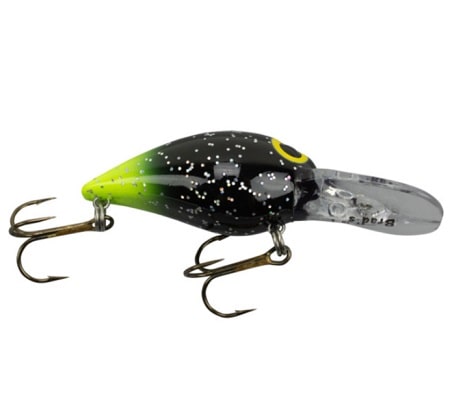
Selecting the right plugs is important, and the plug that you choose will be based on the conditions you are fishing.
Often, of all the plugs you use, you will likely have a select few that catch steelhead the most. Be sure you have extra of those hot plugs.
Plug Colors: Steelhead plugs that are 3 to 5 inches long are best. Be sure you have a good plug selection with a range of colors from chartreuse, orange, and pink to silver, gold, and darker shades like black.
Plug Size: The plug size often depends on the water conditions. For big fish, faster water, or when fishing off colored water, go for larger 4 to 5-inch plugs, In lower and clear water, use 3 to 4-inch plugs. The bigger the plug, the deeper the diving depth.
The 5 Best Steelhead Plugs That Are Proven Effective
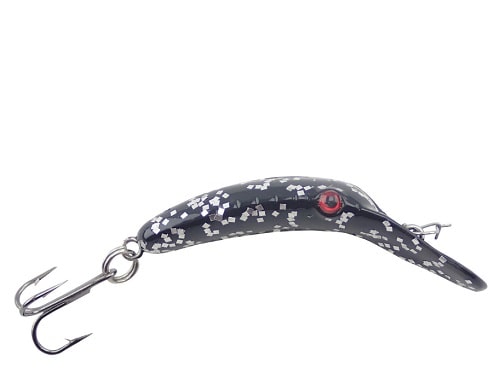
1. Yakima Bait 4.25″ Mag Lip: The Yakima Bait Company makes a few great plugs for salmon and steelhead, with my favorite plug being the Mag Lip Lure.
You will see and hear a lot of guides using and recommending the Mag Lip.
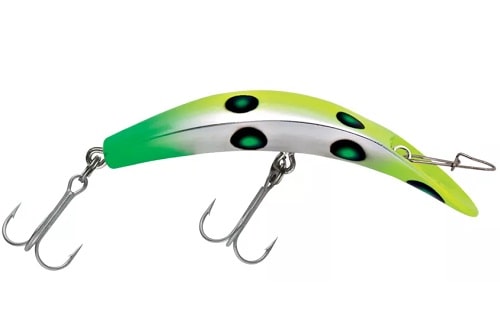
2. FlatFish: Yakima Bait’s 4.25 inch M2 Flatfish. This is another Yakima Bait company lure that is popular and effective and the M2 size is good for faster water and off colored water. The Original Flatfish in size F7 is 2.14 inches, and the U20 size at 3.25 inches are the most popular sizes for steelhead and good for clear water and slower water.
3. Luhr Jensen Kwikfish X-Treme: This great plug comes in sizes from 2.75″ to 3.38 inches. It comes in a ton of great colors.
4. Strom Hot Shots: For shallow clear water conditions, the old-time plug known for catching fish is the Hot Shot. For some anglers, the very small 1.5″ Hot Shot is thier go-to in very low clear water. The larger 2.58″ size Hot Shot is a good all-purpose size.
5. Brad’s Wigglers: Last but not least is the very popular Brad’s Wigglers. This is popular with the plug pullers all around the Great Lakes and on the West Coast Rivers. It comes in sizes from 2 inches to 3.25 inches and a variety of colors. This plug has a deeper diving depth.
Rattle Plugs Or No Rattle Plugs
In dirty and high water, plugs with rattles will often do better. In slow, low, or very clear water, there are many times when plugs without rattle will work better.
The Grab And The Hook Set
Steelhead can be finicky biters even when pulling plugs. A soft sensitive rod tip helps you detect bites when a fish hits, but mastering your hook set is essential. Use these tips to help increase the amount of steelhead you bring to the net.
- Wait, wait, wait: Don’t rush to set the hook when you feel a bite. Give the steelhead a chance to grab the lure and pull the line. This ensures a better hook set and keeps the fish farther downstream from your other lines so there is less chance of tangling.
- Use a rod holder: Placing your rod in a holder helps resist the urge to set the hook too quickly. Often, steelhead will hook themselves when you use rod holders.
- Reel and pull hook set: A great hook set involves simultaneously reeling and lifting the rod to the side. Keep the rod to the side of the boat for longer hook retention and to keep it away from the other lines. Then, once the other rods are reeled in, slowly work the steelhead to the boat.
Boat Control
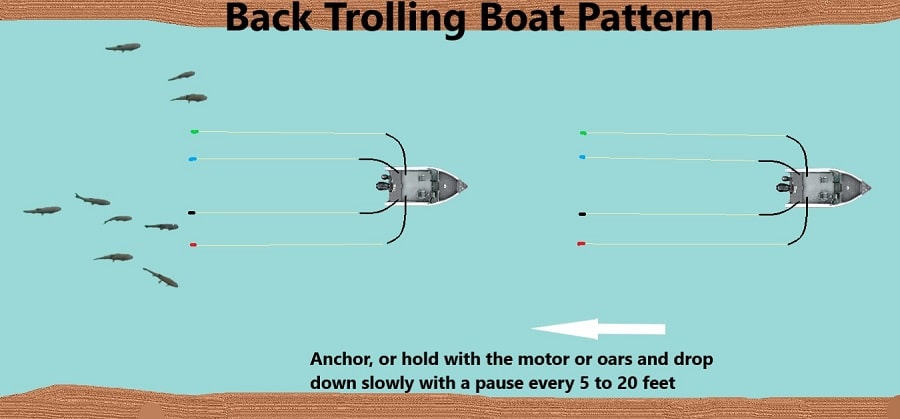
Take your time when fishing in a productive steelhead hole and aim for running straight down often provides the best results.
Slower presentations, with the plug hovering in front of the steelhead, often trigger more bites than rapid movement. I’ve had success catching steelhead by holding the boat and plug steady for over a minute.
Ensure your boat speed is slower than the current to maintain proper plug action. If your speed exceeds the current, the plug won’t wobble correctly and may stop diving. This tactic works particularly well when steelhead are deep, as they’ll shoot up to hit a stationary plug.
Length and Depth for Getting Down
To increase your chances of a steelhead strike, you want your plug to dive deep, typically 6 inches to 3 feet above the riverbed, which is the steelhead’s strike zone. The depth depends on the lure you are using and the amount of line you have out.
It’s very important to know exactly how much line you have out and how deep the lure runs with that much line. This is so you can tell right where your lures are and approximately how deep they are running. The reason is with all the lures you have out, you want the exact same distance.
Some anglers will count the passes of the level wind eye as it travels back and forth across the spool of your reel. However, I prefer line counter reels for more accuracy.
Contrary to common belief, you don’t need to place your lures miles behind the boat to avoid spooking fish, and even in super clear water, I don’t recommend more than 50 feet of line out. I just don’t think there is a need for it.
- Clear Water: 40 to 50 feet of line out
- Murky Water: 20 to 30 feet of line out
Focus on achieving the right depth instead of the correct distance, and just use a longer 3 to 6 foot leader. The correct depth with a longer leader is more likely to entice a steelhead strike than having lures too far back.
I’ve had steelhead hit lures just 10 feet behind my boat. To maximize your chances, set your lures at the same length or same distance to create what anglers call “the wall of death.”
Guide Tips for Better Success
Here are some additional pro tips to boost your steelhead plugging game:
- Bait Wrap Your Plug: Many guides find customizing plugs by wrapping their plugs with a scent bait strip, such as sardine fillets, tuna, herring, or prawns. This scent strip is wrapped on with elastic thread, and it adds scent and texture that can entice steelhead to bite, and possibly strike again if they miss the hooks. Ensure you keep the bait wraps fresh, replacing old ones with new bait strips for optimal scent.
- Use Scent: Commercial scents like the Pro-Cure Scents applied to the wrap or applied directly to the plug can be highly effective in attracting more steelhead to bite.
- Use Sticky Sharp Hooks: Hooks can dull over time, especially when they hit rocks or when they drag along the riverbed. Periodically check and then sharpen your hooks regularly, or just replace them as needed. Sharp hooks increase your chances of landing more fish.
- Use More Rods: Use as many rods as regulations allow in your area, spreading them out for maximum coverage.
- Tipping Plugs With A Trailer: Consider adding pink Berkley steelhead worms or gulp worms to your plugs. Some anglers find that the spinning and wiggling action of these worms can trigger more strikes.
- Use The Same Lures: Since lures run at different depths, it’s best to run the same lures all at the same distance to aggravate holding or moving fish.
Reading The Water And Where To Fish Plugs For Steelhead
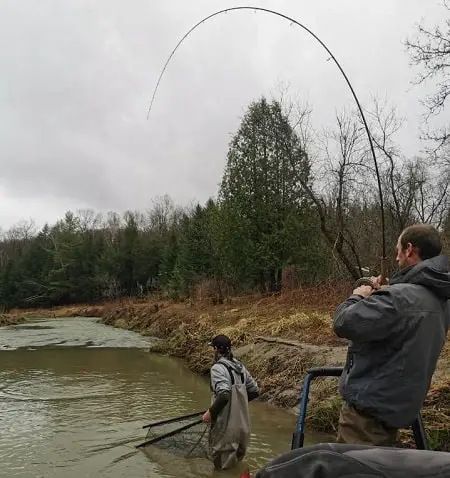
When fishing from a boat, you will need to fish in larger rivers that are suitable for the boat to get through.
If you are wading, you could potentially fish plugs even in small streams or large rivers. But where to find steelhead in the river is tough for some fishermen.
Some spots hold steelhead more than others. Generally speaking, steelhead can be found in various spots as long as there is decent water speed, but plug pulling in the 6 to 20-foot deep range is often the sweet spot.
I look for seams, pocket water, drop-offs, deeper holes, deeper uns, and I fish below rapids right into the tail-outs. Additionally, search for travel routes, which are areas defined by deeper sections of the river with current.
Current breaks and bubble lines are excellent locations for steelhead fishing. Avoid still waters, back eddies, and areas with boiling water or upwellings, as steelhead tend to avoid these spots.
Winter Steelhead: Winter steelhead are slow and lethargic and will often settle into deeper slower runs during the winter. Pulling plugs is a great way to entice them to bite. Locate these slow water areas and you will have more success.
See also: Plug Fishing For Salmon
Plugging for Steelhead Q&A
If you have any questions, comments, or want to share your own advice about plug fishing for steelhead, please feel free to leave a comment below.
Tight Lines!
Graham
